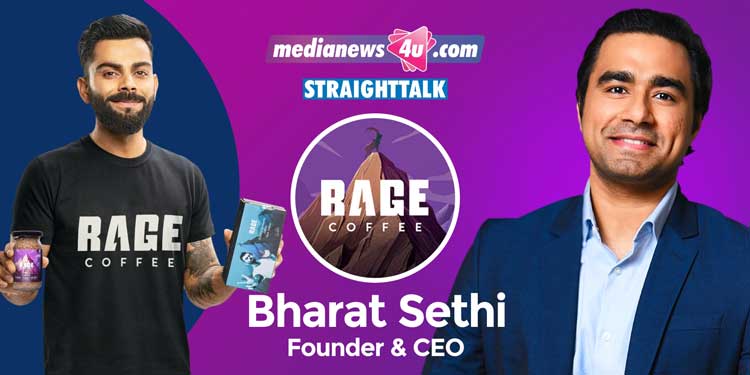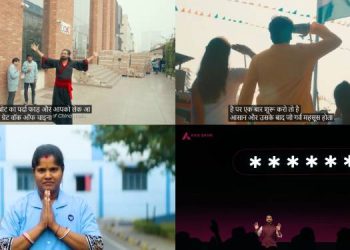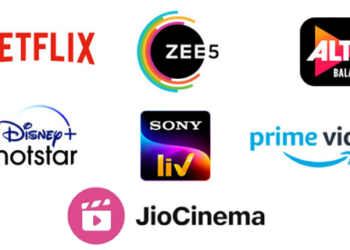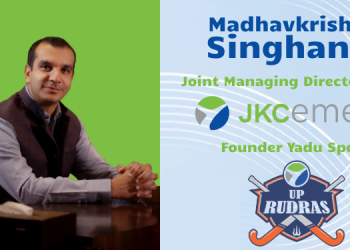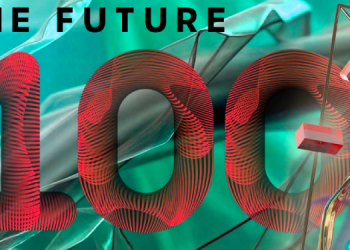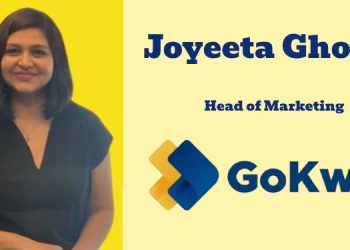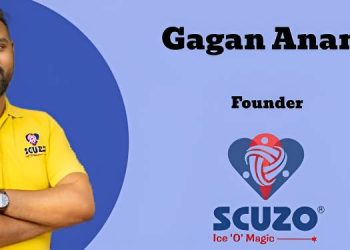The Virat Kohli-backed omnichannel coffee venture claims to be on track to close this financial year with a Rs.100-cr topline, in just five years of operations. It has a stated target to grow to five times that number by 2025-’26. In conversation with MediaNews4u.com, the company’s Founder and CEO reflects on the path to that ambitious target, contribution from digital and more.
Rage Coffee launched in 2018. You say it is set to close FY 22-23 with Rs.100 cr topline. How has the growth been year on year? In particular, what was the experience during Covid years of 2020 and 2021?
At the time when Covid happened, the supply chains were hit, the cafes were shut. So, we utilised that opportunity to hammer down on our messaging and our communication through online channels. So, we actually grew quite well and quite aggressively during 2020-21.
We’ve grown 5x. Now, from here on, I think we should be able to do about 2 to 3x every year. We’ll hit about Rs.500 cr, that’s the goal.
You have instant coffee, ground coffee, plant based milk products. How do you categorise the portfolio? How does each stack up and is there a fastest growing category for Rage?
We enjoy a very unique position in the market. We were the first ones in the entire category to take on the legacy giants head on and say that we will disrupt the instant coffee space. We’ve been very honest and true to our mission of democratising coffee and overall making coffee very accessible, without complicating coffee at all. So to a common consumer, how can we give him a great cup of coffee that is 10 times better in experience, in taste and caffeine? So, that’s what our mission has been. We have disrupted the instant coffee space, which is the soluble coffee space, through our own unique products around flavourings and functionalities. Within that, we have some of very high-selling flavours like a Sparky Orange, a Mint Mocha — some of the flavours which didn’t exist before. These are some of the flavours that have been doing really well for us besides our Original flavour which contributes to almost half our sales. Primarily, our business is in the instant coffee space.
Between bottled SKUs, sachets, liquids and gift packs, which are more popular? Which is the fastest growing?
If you look at the liquid coffee, it is a very unique market, it’s a very niche market. The gift pack is also a very niche market. The primary market is everyday consumers (bottled SKUs). So, that’s what our bulk of the market is and within that, we’ve kind of disrupted.
A recent launch – sustainable jars:
Have sachets been a solution to cracking price sensitivity among consumers?
Our sachets are not very low on price currently. For us it solves two to three bigger problems. One is convenience. So if you are travelling or on the go, if you are in the office or hotel, you don’t have any other option apart from the usual, like coffee from the machine or very high cost coffee. So, typically these single-serves come handy during those times. I wouldn’t say that they are solving the pricing issue. We have plans to launch lower priced sachets also, which we don’t have currently.
What kind of a premium does the brand command vis a vis competitors?
Today, we have products across the range. So we have entry level products which compete with the legacy giants and for the price-conscious consumers. We have products that are for the premium consumers as well, which is how we started the business. So, there are different segments of consumers and today we believe that there are uncommitted tea-coffee drinkers and we have products for them. There are consumers who have identified coffee as their go-to beverage, we have products for them also.
What is the average ARPU? Is this growing?
ARPU is not the most important parameter in our case. What we track is retention. The retention has gone up on our own website.
How big is the loyalty programme and how is it growing?
Our loyalty programme is one of the first marketing programmes we launched in January 2019. Today that programme has close to about two and a half lakh consumers. We see almost close to 1,500 redemptions everyday from the loyalty programme. We have been very generous with the loyalty programme also. The kind of discounts and offers that one enjoys in the programme is very different. There is great value for somebody who wants to join. It has done very well for us.
What is the involvement of Virat Kohli beyond being on all your packs and promos?
Virat is an investor so his involvement is much more than that of a typical brand endorser. First of all there is conviction that he had in the product because he is not just endorsing it, he is also becoming a part of the team, he owns equity in the company. His involvement is to that extent where we involve him in the focus groups and give him the product to sample. We work very closely with his team in terms of defining the communication and the brand language also. Going forward, you will see how we use Virat Kohli’s communication, how we use the packaging. We also have a campaign coming with him. So his involvement is to the extent what the brand wants.
Virat Kohli bats for ‘The Perfect Kick’
How much of the sales is online and how much is from physical stores? How is each growing?
Around 50 pc of our business comes from the online medium, from marketplaces, from direct to consumers. About 75 pc of online sales come from our website, while 25 pc is generated from sales on e-commerce platforms including Amazon, Flipkart and some of the hyperlocal apps.
The brand has a target to expand to 10,000 touch-points by the end of this March. How has this number grown over the years?
We had one full year for distributing the product and generating revenue before Covid happened. That year, I think we had close to 30 to 40 outlets in a very focused approach. In Delhi basically, and from then on we started with a different approach during Covid. As we went pan India, we started going after pockets of opportunities. We started building distribution in smaller cities, outside the metros. So there we grew quite well.
Today we are at 180 distributors. We are currently servicing around 32 cities. Till last year, we were at about 30-odd distributors at this time and we were servicing six or seven cities only. So the business has expanded tremendously from an offline footprint and this number will become almost five times in the next 12 months.
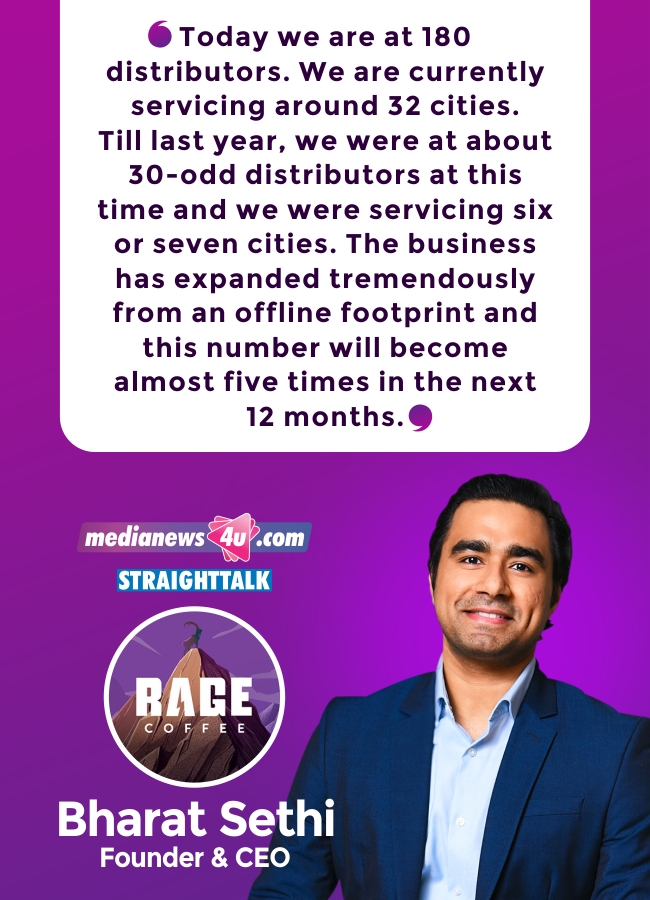
Is Rage Coffee an urban market-driven brand? Are there plans to penetrate in Tier 2 and Tier 3 markets?
We are already present in smaller cities. Smaller cities drive a chunk of our revenue, actually. We have plans to aggressively double down our growth there.
What is the marketing budget? How much of it is on digital?
The marketing budget is strong. We have to spend very aggressively during the growing years. Online marketing spend would be 60 to 65 pc of the total budget.
Has the cost of acquisition come down over the years? How is it changing?
We have been very big on collaborations since the beginning of the company. We started doing collaborations with other brands long before it became fashionable. A lot of companies are driving down their acquisition cost by collaboration. We do it because of the synergy that we see with other brands, for the benefit of the consumers. Collaborations are sometimes done for marketing reasons and sometimes for product reasons.
If we look at it from a paid promotions point of view, the cost has definitely not come down. It has only gone up because advertising has become more and more expensive in the last two to three years. We focus on a lot of organic marketing.
The target of Rs.500 cr by 2025-’26. How will this be split between the online and physical channels?
Online should not be more than 15 pc at that time. We are inherently an offline product. So, a majority of the demand should come from there.
Having said that, according to me the lines between offline and online are very blurred. It’s not online or offline, it’s online and offline because some of the benefits of doing business online cannot be given by offline. Similarly, offline does something which online cannot. So it is the combination of both and combination is a secret recipe for some companies.
There is a deluge of online coffee brands. Is there scope for all of them? Is the market expanding? What is the potential for the top end coffee segment?
The challenge that I see with a lot of brands is that they are all very late to the race. They are following a certain pattern and they want to capitalise on that pattern. But they need to understand that the market has completely changed in the last three to four years.
I see a lot of brands just copying the market leaders. Without innovation there cannot be consumer love. That’s where the challenge is. Because of the lack of innovation and lack of vision and originality, most of them will go bust. They will not be able to disrupt anything, there will be a long tail of these brands. Not just coffee, for every category.
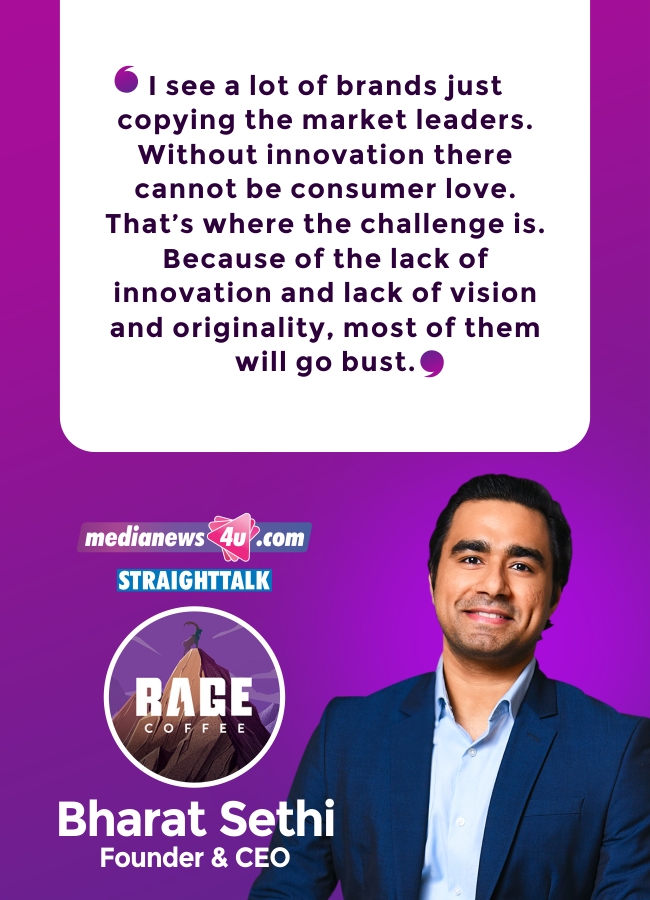
These brands will face tougher competition. Businesses in the FMCG space are made because of brand value and brand pull. Without the brand there is nothing. I see that’s where the biggest challenge is. Most of them do not have the ability to build a brand because they are copying or simply lacking vision.
Have you tried large scale advertising on mass media? Is it something we can expect as you scale?
We have done radio and print advertising in a lot of cities. That has worked really well for us. Especially during festive times, we have done it in the last few years. We even did a billboard campaign this March.
How does cross promotion at Social outlets (also owned by you) work? What other retail promotions do you engage in?
We do a lot of promotions. Basically we do anything to get the attention of the consumer in the retail store. We do events, pop-ups and all kinds of marketing on the ground that can help us get into the mind of the consumer and help build credibility. That’s the goal and we do it quite often.
(Content powered by www.MediaNews4u.com. First published by FreePressJournal.com/ BrandSutra under exclusive syndication arrangement.)

